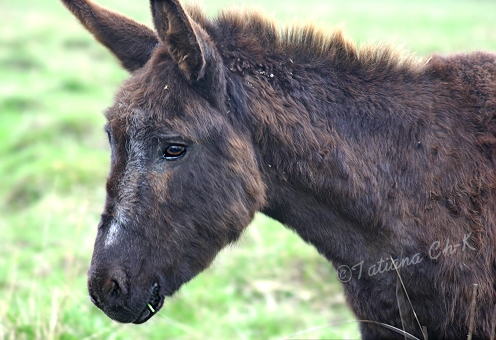| Donkey or ass, Equus asinus, is a domesticated animal of the horse family, Equidae. Most wild donkeys are between 1 and 1.60 m in length. Domestic donkeys stand from 0.9 to over 1.40 m tall. The Andalucian-Cordobesan breed of southern Spain can reach up to 1.60 m high. Donkeys are adapted to marginal desert lands, and have many traits that are unique to the species as a result. They need less food than horses. Overfed donkeys can suffer from a disease called laminitis. Unlike horse fur, donkey fur is not waterproof, and so they must have shelter when it rains. Wild donkeys live separated from each other, unlike tight wild horse herds. Donkeys have developed very loud voices, which can be heard for over three kilometers, to keep in contact with other donkeys of their herd over the wide spaces of the desert. Donkeys have larger ears than horses to hear the distant calls of fellow donkeys, and to help cool the donkey's blood. Donkeys' tough digestive system can break down near-inedible vegetation and extract moisture from food more efficiently. Donkeys can defend themselves with a powerful kick of their hind legs. |

